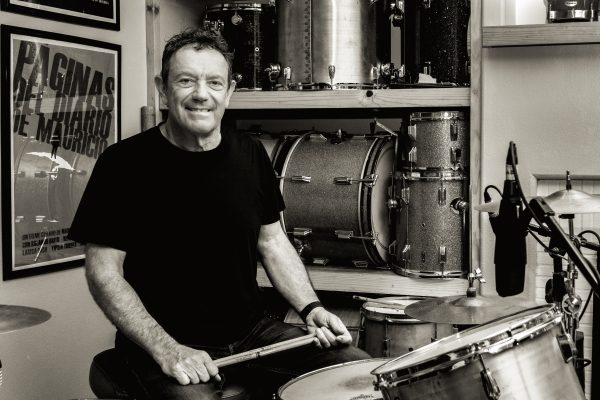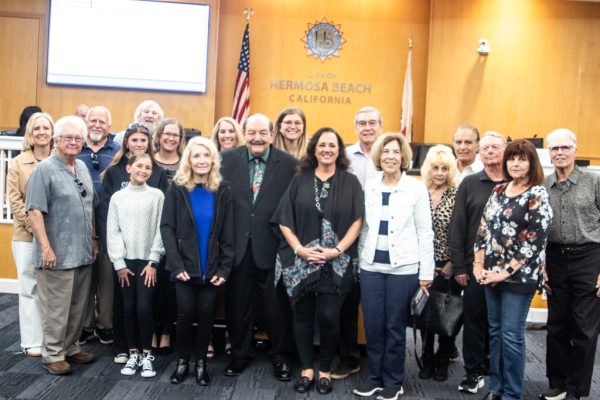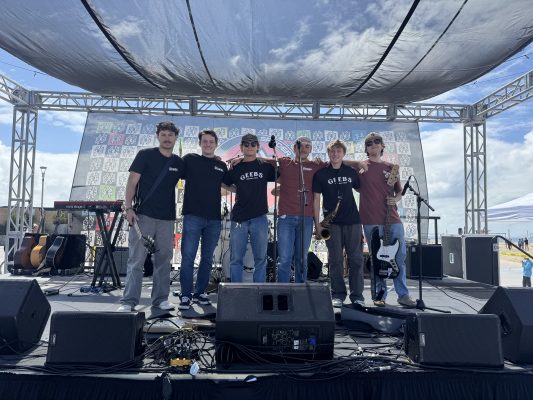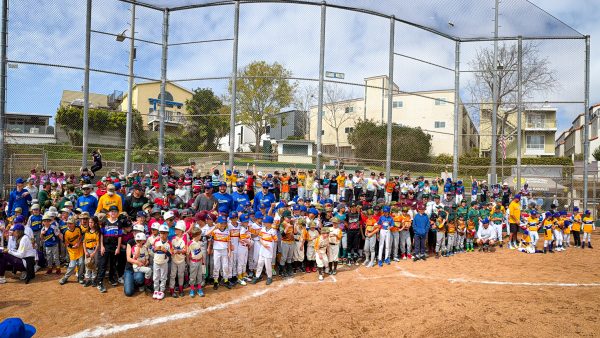
In 2006, Steve Shaw started giving not-so-grand tours of Redondo Union High School’s athletic facilities.
Shaw, a teacher at the high school since 1982, was part of a committee of physical education instructors and coaches who were trying to bring attention to the severe degradation of the school’s eastern 30 acres. He gave the tour to school board members, architects, administrators, and anyone else who asked.
It was a walk through the land that time forgot: water-damaged gym floors, leaking roofs, rusted-out 40-year-old lockers, closet-sized overheated offices, abysmally dank bathrooms with door-less toilet stalls, gopher-infested athletic fields, a tilting swimming pool with a cracked foundation, five-foot high showers, and a track and field facility that rarely hosted events because its substandard equipment, by CIF rules, forced the home team to surrender points in pole vaulting rather than actually holding the competition.
Shaw thought the state of the campus was both an aesthetic and educational shame. Visitors couldn’t help but see the decay, and kids were not encouraged to develop good fitness habits.
“Let’s face it, academics are very important, but a lot of kids also come to school for athletics, and the community visits the campus more for sports than anything else,” Shaw said at the time. “That’s the reality of it. Do most people really know about test scores? No. But I bet most the community knows what happened Saturday night [when the girls volleyball team upset powerhouse and rival Mira Costa, something they did again last Thursday]. Is that the most important thing? No. Let’s keep it in perspective. But it is a big part of the high school experience.”
In November 2006, however, the school board unanimously rejected Superintendent Steven Keller’s proposal to send a $95 million school bond to voters for approval. Community support, they said, was too low.
Keller recalled that Shaw approached him with a different message: $95 million wasn’t enough.
“He was very forthright,” Keller said. “He said if we really wanted to transform that high school, if we really wanted to do the job of rebuilding that facility, including the athletics component, we would have to go out for much more money. ‘And I can assure you that I can garner support from the athletic community in Redondo Beach,’ he told me.”
The superintendent was a little skeptical. He had, after all, just endured a 0-5 shellacking from his board.
Keller’s response was, “Okay, moneybags.”
Last Friday, Keller stood before a crowd of a couple hundred people at the unveiling the new RUHS aquatics facility. A glistening new pool was behind him, and behind that, the bright green field of the newly refurbished Sea Hawk Bowl football field. A new gym and workout facility overlooked both. All the work was part of the $145 million Measure C, which was approved by the board in late 2007 and by Redondo voters in early 2008 and included $95 million in upgrades for the high school alone.
At the unveiling, RUHS Principal Mary Little praised the vision and leadership of the school board and the administration and the generosity of residents.
“We are absolutely indebted to the residents of Redondo Beach for the passage of Measure C in 2008,” Little said.
City Councilman Matt Kilroy commended the school board for “not being shy about what they were asking to do” in seeking a $145 million bond.
“It is such a jewel to the crown in our community of Redondo Beach….It is something that will contribute to the community, not just the schools, for decades to come,” Kilroy said.
“Wow,” said school board president Drew Gamet. “Just look at it. Think about how just a few years ago we had the idea to go farther…We wanted to build facilities that were more cutting edge and better than anything around. And now you are sitting in the middle of it.”
The plan that resulted in Measure C came together in 2007. The school board commissioned a facility needs study that showed the district needed $177 million in upgrades, and then painstakingly made their case to the community. In March, 2008, the measure passed with nearly 66 percent approval.
The timing proved to be perfect; the downturn in the economy resulted in a slow construction market, meaning the district won significant savings on some projects and could expand the scope of construction on others. The aquatics center and small gym, for example, received bids $2.5 million under the $12 million originally budgeted. It also had features that hadn’t been originally contemplated – the 40-meter by 25-yard pool is heated by solar panels atop the adjacent gym, and its north end includes a “zero entry” ramp designed with the Beach Cities Health District’s senior and kids programs in mind.
Shaw was consulted extensively in the design process for the athletic facilities. Keller estimated that the lead architect spoke with Shaw 100 times.
“There’s a lot of detail an architect or even a board member or superintendent wouldn’t understand without someone on the ground, living it,” Keller said in an interview.
On Friday, as the dignitaries gathered and speeches were made, Shaw sat quietly in the back of the new bleachers and took in the scene. In 2006, he’d assumed he’d no longer be working by the time the new facilities were built. Now, as he looked at the sparkling new pool, he could barely believe his eyes.
“You look at the designs, but you don’t really know what it’s going to be like, what a great setting it is,” he said. “…This is really top notch, really top notch.”
Shaw was particularly excited for the school’s water polo teams, who had missed two full seasons of home matches. They have been playing their matches at Mira Costa.
“They made the sacrifice,” he said. “They are really to be commended.”
When Keller addressed the crowd, the first thing he did was thank Shaw, who he recognized for his “behind the scenes” leadership.
“He could easily have gone unnoticed,” Keller said afterwards. “He is the leader behind the resurrection of the athletic facilities, though, no doubt about it. I don’t think anyone would disagree with that – not that there weren’t a lot of other people who had their hands on this. But he is that quiet, steady, laser-like leader.”
The event closed with a special guest. Three-time Olympian Jason Lezak was an appropriate choice to kick things off at the new facility. In 2008, at the age of 32, he anchored the men’s 400 meter freestyle relay in Beijing and earned the team a gold medal victory with one of the greatest come-from-behind laps in the history of the sport.

Lezak was introduced to the crowd as the entire race was shown on the Jumbotron-style screen at the south end of the pool. “They said I was over the hill,” Lezak said.
He also said that good facilities help produced good teams, something particularly important early in an athlete’s career. He said swimming in such a facility helps keep the sport fun.
“I never would have made it to that point in my career if I didn’t have the right place to train,” he said.
With that, Lezak and three RUHS swimmers – Jonathan Diaz, Susan Nieves, and perhaps the greatest swimmer in school history, Hogan Enscore – took to the water. The crowd counted to three as an improvised starting gun, but Lezak paused, giving the students a head start. But after he finally jumped in and disappeared underwater, he surfaced half way across the pool, even with Enscore.
It didn’t matter who won, exactly. At the end of the race, the water polo teams took a giddy, running, collective leap into the pool. Everybody won. ER










